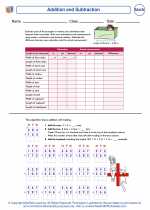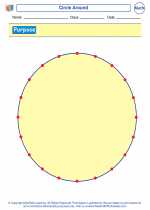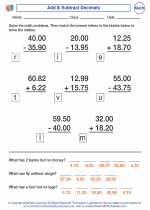Hexagonal Prism
A hexagonal prism is a three-dimensional shape that consists of two hexagonal bases and six rectangular faces. The bases are parallel and congruent, and the rectangular faces connect the corresponding sides of the two hexagons.
Properties of a Hexagonal Prism:
- It has 8 vertices (corner points).
- It has 12 edges (line segments).
- It has 6 faces (2 hexagonal bases and 6 rectangular faces).
- The opposite faces are parallel and congruent.
Formulas for a Hexagonal Prism:
To calculate the surface area and volume of a hexagonal prism, you can use the following formulas:
Surface Area (SA) = 2B + PH
Where B is the area of the base (hexagon) and P is the perimeter of the base, and H is the height of the prism.
Volume (V) = B × H
Where B is the area of the base (hexagon) and H is the height of the prism.
Example Problems:
1. Calculate the surface area of a hexagonal prism with a base area of 48 square units, a base perimeter of 24 units, and a height of 10 units.
Solution:
Surface Area (SA) = 2B + PH
SA = (2 * 48) + (24 * 10)
SA = 96 + 240
2. Find the volume of a hexagonal prism with a base area of 60 square units and a height of 12 units.
Solution:
Volume (V) = B × H
V = 60 * 12
V = 720 cubic units
Real-life Examples:
Hexagonal prisms can be found in various everyday objects, such as certain types of water bottles, industrial storage containers, and architectural structures. Their unique shape allows for efficient use of space and structural stability.
Summary:
A hexagonal prism is a polyhedron with two hexagonal bases and six rectangular faces. It has specific properties, formulas for surface area and volume, and real-life applications. Understanding the characteristics and calculations related to hexagonal prisms can be helpful in geometry and in practical situations.
.◂Math Worksheets and Study Guides Fourth Grade. Addition/Subtraction

 Activity Lesson
Activity Lesson
 Activity Lesson
Activity Lesson
 Worksheet/Answer key
Worksheet/Answer key
 Worksheet/Answer key
Worksheet/Answer key
 Worksheet/Answer key
Worksheet/Answer key
 Worksheet/Answer key
Worksheet/Answer key
 Worksheet/Answer key
Worksheet/Answer key
 Worksheet/Answer key
Worksheet/Answer key
 Worksheet/Answer key
Worksheet/Answer key
 Worksheet/Answer key
Worksheet/Answer key
 Worksheet/Answer key
Worksheet/Answer key
 Worksheet/Answer key
Worksheet/Answer key
 Worksheet/Answer key
Worksheet/Answer key
